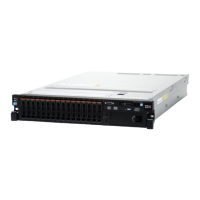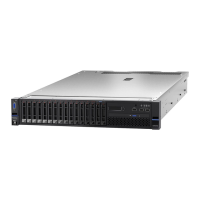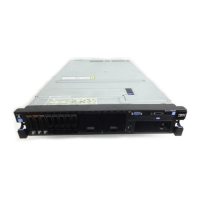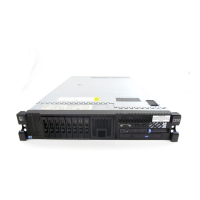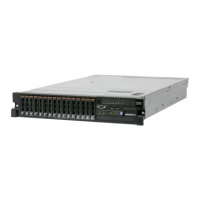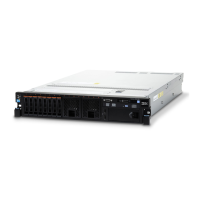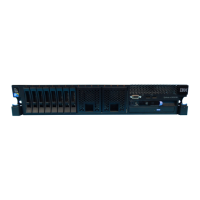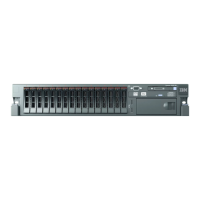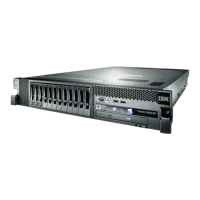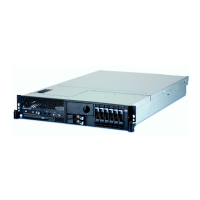Table 11. Connectors on each memory channel
Memory channel DIMM connectors
Channel 0 1, 2, 3, 10, 11, 12
Channel 1 4, 5, 6, 13, 14, 15
Channel 2 7, 8, 9, 16, 17, 18
The following illustration shows the memory connector layout that is associated
with each microprocessor. For example, DIMM connectors 10, 11, 12, 13, 14, 15, 16,
17, and 18 (DIMM connectors are shown underneath the boxes) are associated with
microprocessor 2 slot (CPU2) and DIMM connectors 1, 2, 3, 4, 5, 6, 7, 8, and 9 are
associated with microprocessor 1 slot (CPU1). The numbers within the boxes
indicates the installation sequence of the DIMM pairs. For example, the first DIMM
pair (indicated within the boxes by ones (1)) should be installed in DIMM
connectors 1 and 2, which is associated with microprocessor 1 (CPU1).
Note: You can install DIMMs for microprocessor 2 as soon as you install
microprocessor 2; you do not have to wait until all of the DIMM connectors for
microprocessor 1 are filled.
The following table lists the installation sequence for installing DIMMs in
memory-mirroring mode.
Table 12. Memory-mirroring mode DIMM population sequence
DIMMs
Number of installed
microprocessors DIMM connector
First pair of DIMMs 1 3, 6
Second pair of DIMMs 1 2, 5
Third pair of DIMMs 1 1, 4
Fourth pair of DIMMs 2 12, 15
Fifth pair of DIMMs 2 11, 14
Sixth pair of DIMMs 2 10, 13
Note: DIMM connectors 7, 8, 9, 16, 17, and 18 are not used in memory-mirroring mode.
When you install or remove DIMMs, the server configuration information changes.
When you restart the server, the system displays a message that indicates that the
memory configuration has changed.
CPU1
CPU2
12
3
4
56
7
8
16
15
14
13
1211
10
9
1122
33
44
5566
17 18
Figure 123. Memory connectors associated with each microprocessor
120 System x3650 M3 Types 4255, 7945, and 7949: Installation and User’s Guide
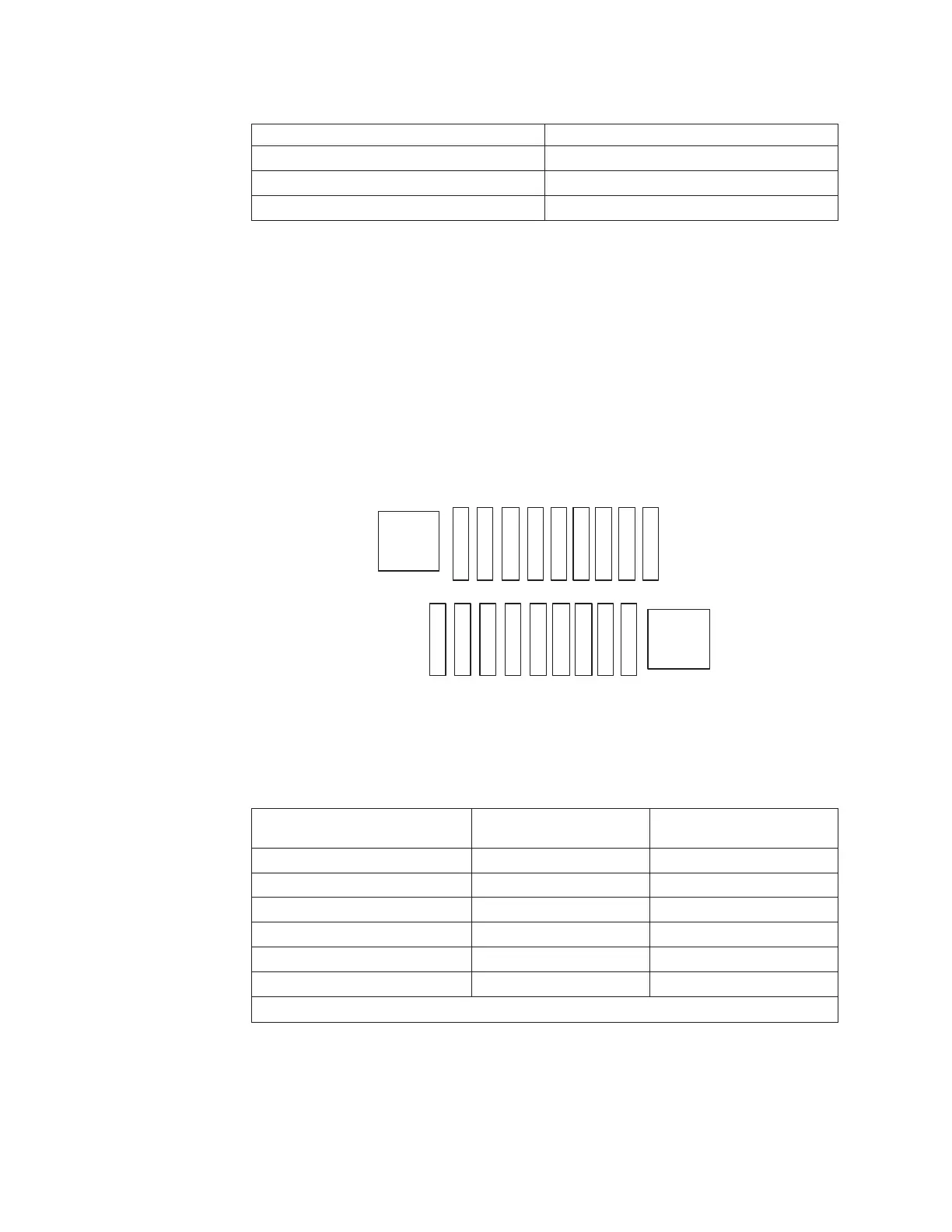